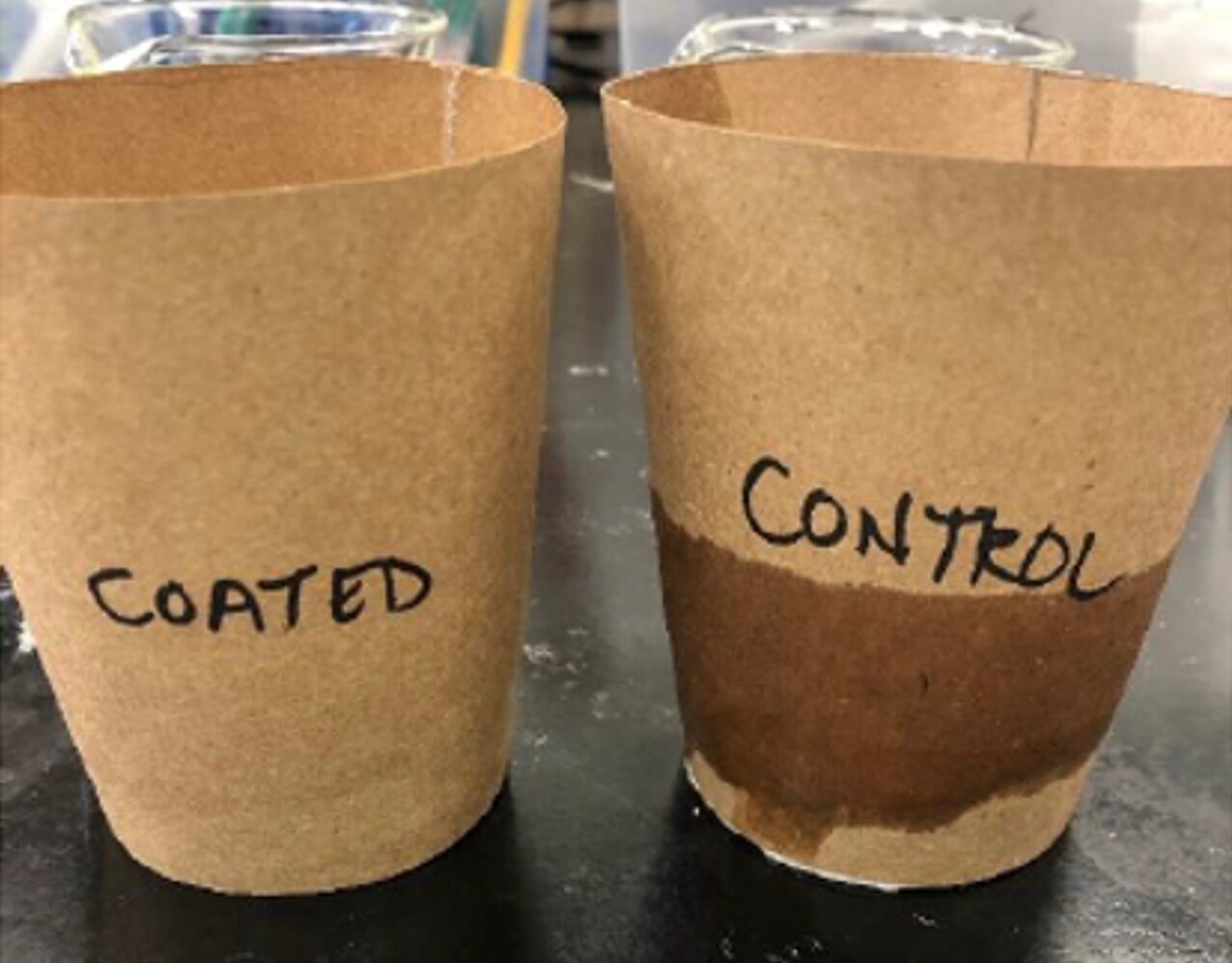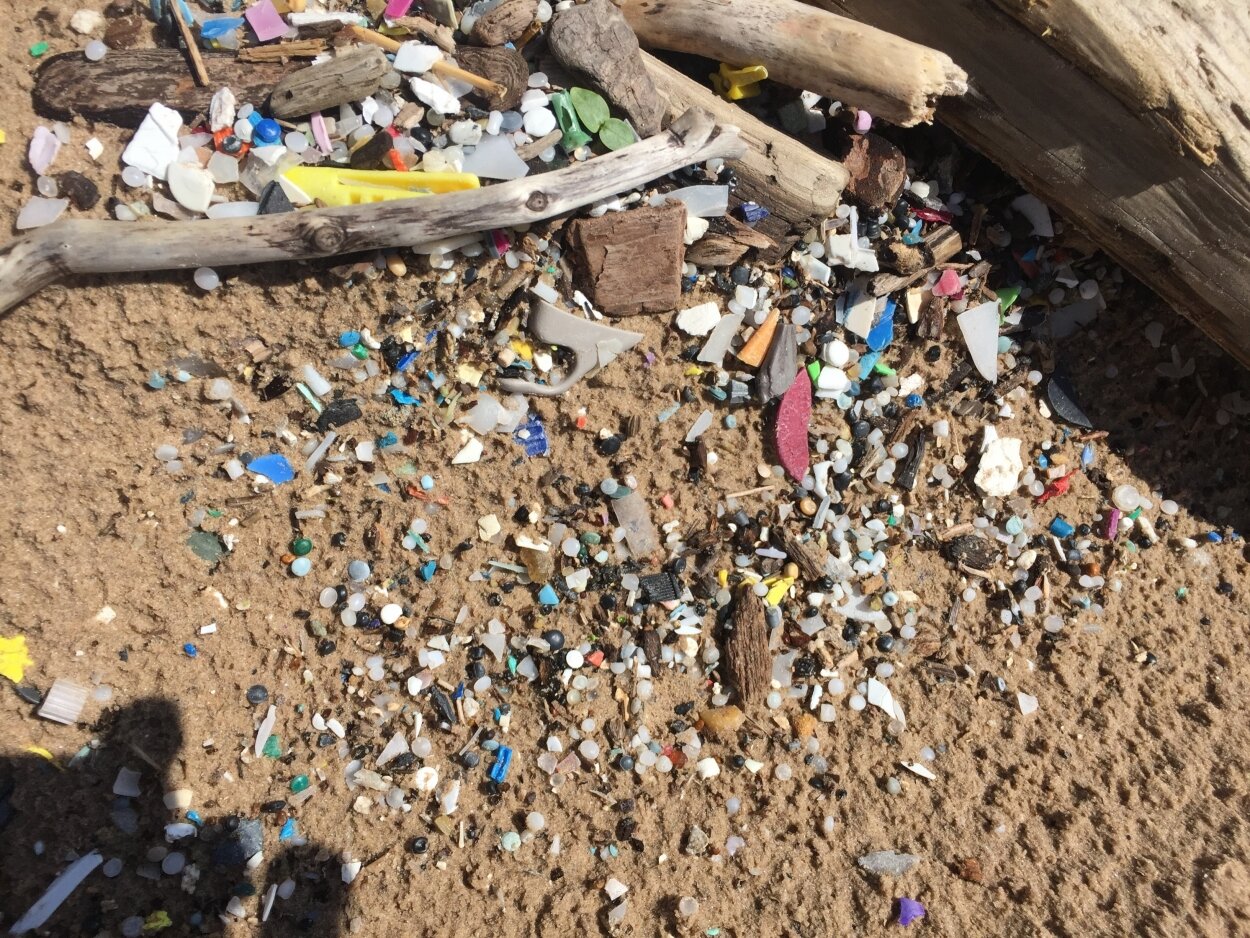Michigan State University’s Muhammad Rabnawaz has created a new coating for paper packaging that’s both economical and ecofriendly.

The coating, developed by Rabnawaz’s Sustainable Materials Group, protects paper packaging from oil and water—making it useful for things like paper plates and juice boxes—using environmentally friendly ingredients.
“If it enters the water, if it enters the ocean, it will decompose,” said Rabnawaz, an assistant professor in the School of Packaging, who shared the coating’s latest formulation online on Jan. 18 in the Journal of Applied Polymer Science.
This is an upgrade over many existing paper products that rely on resilient polymers called thermoplastics to keep the underlying paper dry and sturdy when holding food or beverages.
“Uncoated paper will leak,” Rabnawaz said, which is a shortcoming that has likely crossed the mind of anyone who has trusted a paper cup to hold their hot tea or coffee. “So the solution has been to laminate it with plastic.”
The plastic, however, is too good at its job. It keeps protecting the paper, even after it’s thrown out. This has two major drawbacks.
For one, the paper can’t be recycled with the plastic clinging to it. Secondly, these paper packaging products can easily end up in bodies of water, adding litter to lakes, oceans and streams.
“There’s waves. There’s tides. There’s UV light from the sun,” said Rabnawaz. “It’s the perfect recipe to turn the material from the paper into microplastics.”
Microplastics are tiny plastic fragments that pollute aquatic ecosystems and make their way into the water and seafood that people consume, carrying unknown health consequences.
Manufacturers have explored alternatives to plastic coatings, but they usually come with other problems. One of the more popular options involves coatings that belong to the PFAS family of “forever chemicals.” PFAS is the abbreviation for perfluoroalkyl and polyfluoroalkyl substances, which pose their own health concerns.
“The question we asked was can we get rid of the plastics that become microplastics without using PFAS,” Rabnawaz said.
To answer this, he enlisted the help of his Spartan team: graduate students Aditya Nair and Dhwani Kansal; research assistant Ruoqi Ping; and recent Ph.D. recipient Li Zhao.

The group formulated a coating based on biocompatible and biodegradable components. The coating contains an oil used in contact lenses, a water-soluble polymer called polyvinyl alcohol and a natural starch-like polymer derived from shellfish (which is different from the shellfish proteins that trigger allergic reactions).
Although this composition uses polymers, none are resilient as the thermoplastics currently used in paper products, Rabnawaz said.
“All plastics are polymers, but not all polymers are plastic,” he said. The new coating breaks down into water, carbon dioxide and other inert molecules instead of lingering in the environment as microplastics.
“Another good thing is, once the paper is repulped, you can remove the coating,” he added, which means that the paper can be recycled. “The paper becomes just like pristine paper and you can use it over and over again.”
Although the coating was motivated by environmental and public health concerns, Rabnawaz’s team also developed it with an eye toward economics.
For example, chitosan is naturally abundant, but the United States doesn’t prepare a lot of it for manufacturing. So the Spartans figured out how to incorporate polyvinyl alcohol, which is more readily available and less expensive. It’s what laundry pods use to encapsulate their detergent. This addition reduces the amount of chitosan required to make the coating, resulting in a more commercially viable product.
Rabnawaz has already filed two patents related to the coating—adding to his multiple filings since joining MSU in 2016—and started sharing samples with interested companies.
“We are definitely working on commercialization,” Rabnawaz said.
Story Source: Michigan State University
Materials provided by
Note: Content may be edited for style and length.
Journal Reference:
Aditya Nair et al. Oil‐ and water‐resistant paper substrate using blends of chitosan‐ graft ‐polydimethylsiloxane and poly(vinyl alcohol), Journal of Applied Polymer Science (2021). DOI: 10.1002/app.50494
YOUR SUPPORT IS CRITICAL TO KEEP PCE ALIVE
$3.00







